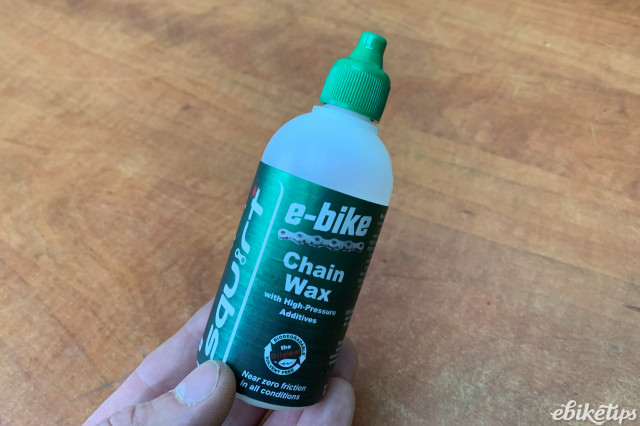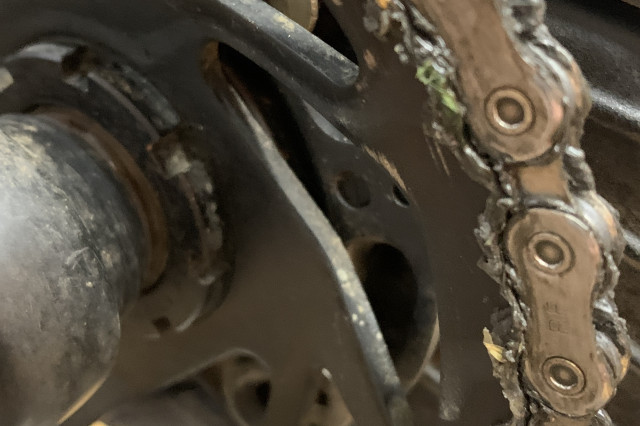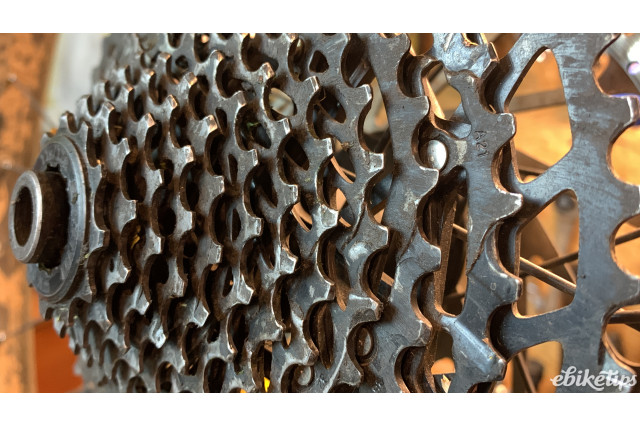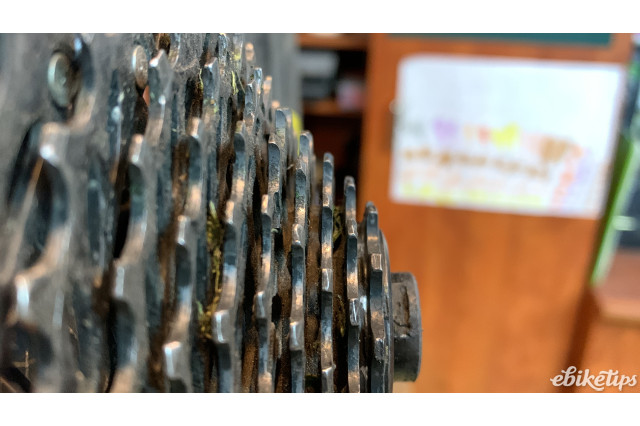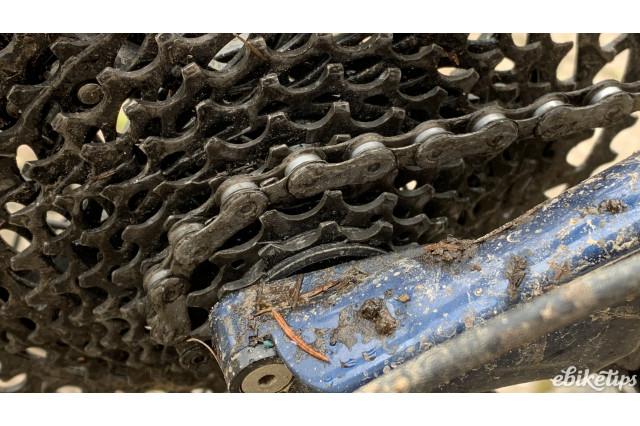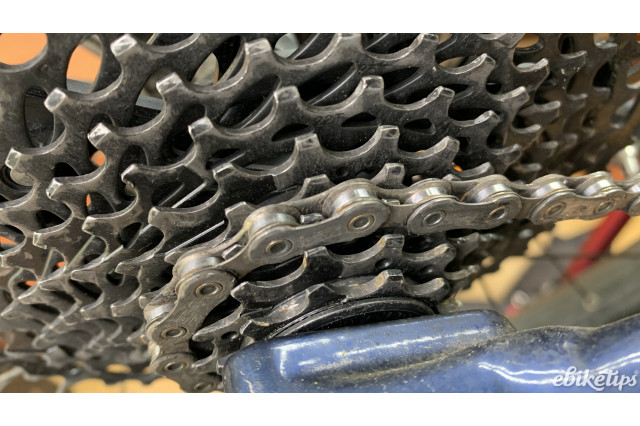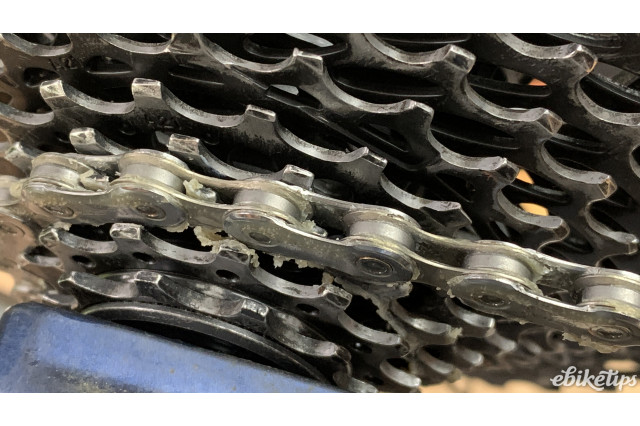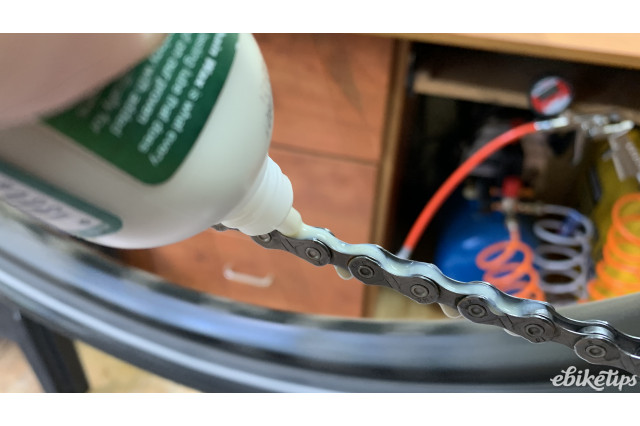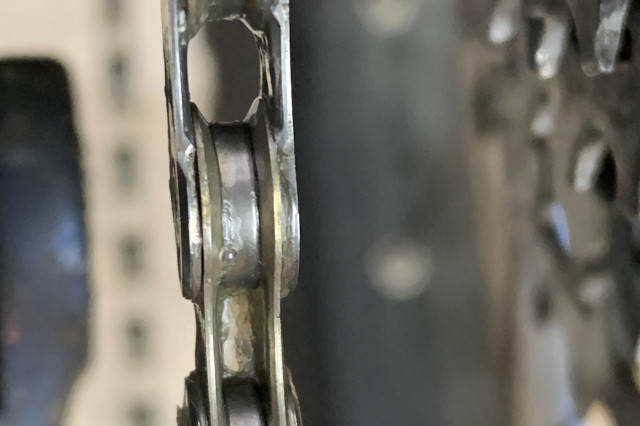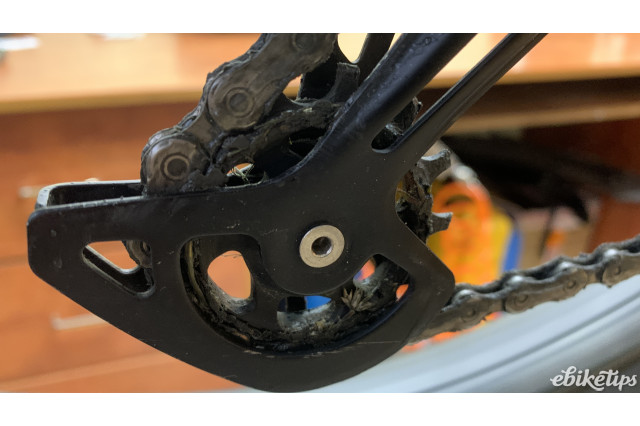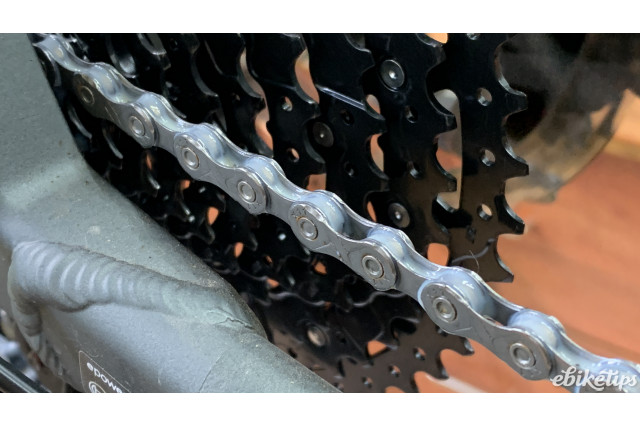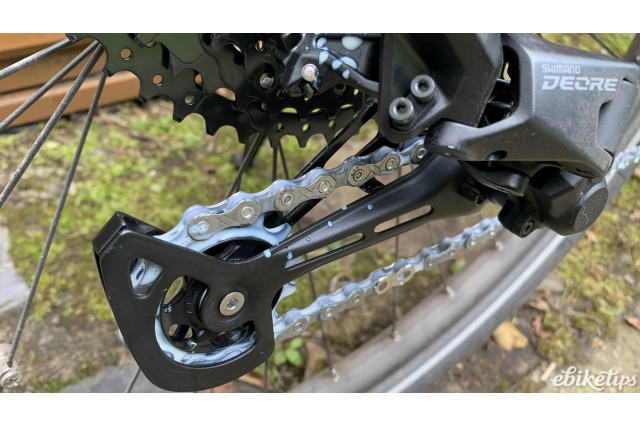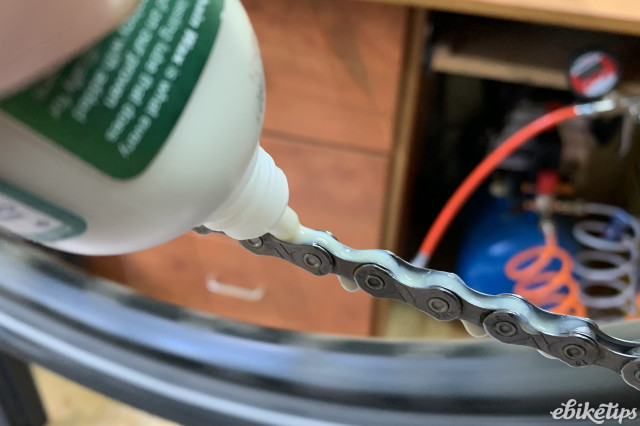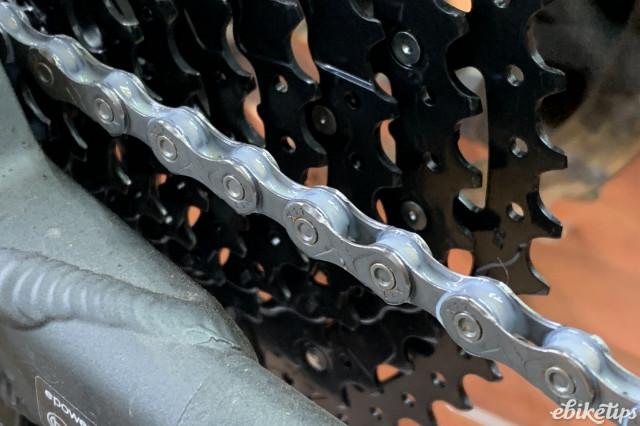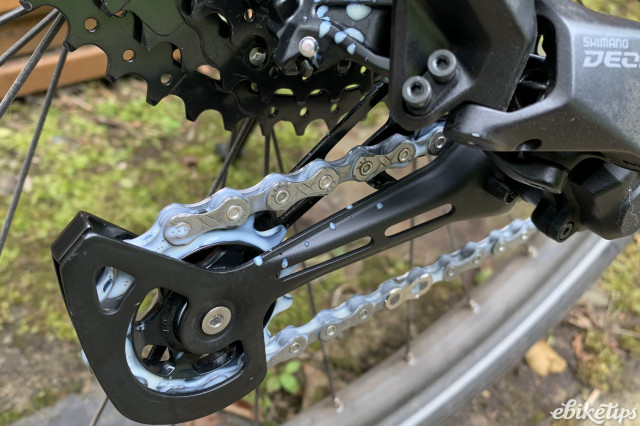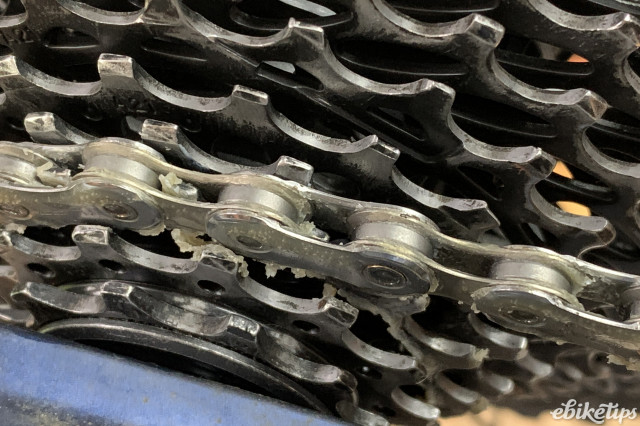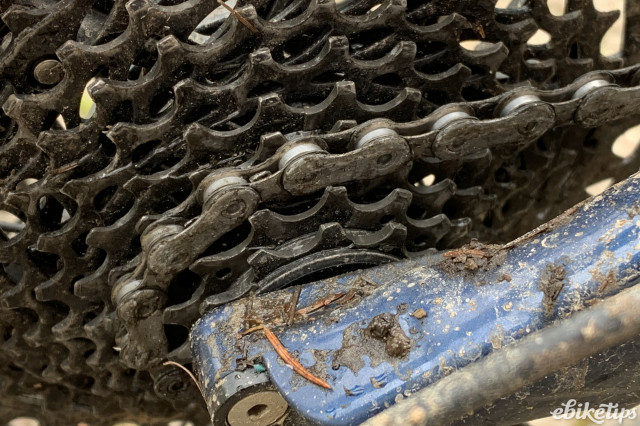Squirt E-Bike Chain Wax
Overview
- Delivers a silent, rust-free chain
- Easy to apply
- Stays clean and lasts a long time in road use
- Messy to apply
- Need to wait for it to dry overnight before riding
- Clogs up over time
Squirt E-Bike Chain Wax gives you some of the benefits of chain waxing without much faff. It’s quite messy and expensive though.
The benefits of waxing your chain are many – best-possible reduction in friction, cleanliness, and the resulting lower maintenance costs. But the traditional method of waxing – removing your chain and soaking it in a slow-cooker pot of molten wax, hanging to dry and then refitting – is a step too far for all but the most dedicated of frictionistas. South Africa-based Squirt have sold liquid wax-based lubes for years, aimed predominantly at the cross-country mountain bike market. MTB rides in Africa mostly deal with dry, dusty conditions – perfect for a wax lube, where the dust simply won’t adhere, unlike oil lubes where it almost instantly turns into a grinding paste.
Squirt’s E-Bike Chain Wax differs from their standard wax lube by having ‘specialized high-pressure friction modifiers’ in the recipe to deal with the increased torque/pressure that an e-bike adds to the chain.
There’s some prep involved – you need to completely strip the factory grease off the chain first. To be fair this is standard for all bike lubes, as the grease that comes on a new chain can often be the worst-possible kind of lubricant and if left on will greatly accelerate chain wear. This is because every single particle of dirt or dust will stick to the grease and be absorbed into what becomes an instant pudding of grinding paste. Factory grease is often only really there to stop the chain rusting in storage and should be stripped off before a proper lube is added. Squirt recommends using their own Squirt Biodegradable Bike Cleaner Concentrate, although obviously others are available.
Once you’ve stripped the factory grease off and dried your chain, applying Squirt is a rather messy process. You’ll really want a cloth under your whole chain, as the lube is going to drip in places. You need to apply one layer to the chain – pedalling forwards with the back wheel off the ground – wait five minutes for it to soak in, then apply another layer. If you have a good eye and the bike is being held steady you might get the whole chain coated evenly in one go, otherwise it might take a few spins. The chain will then be thickly coated, and you need to wait roughly a day for it to dry out before riding.
This waiting time is the same for reapplication and is one of the drawbacks of liquid wax lubes – the wax only flows at room temperature because it’s suspended in a carrier liquid that needs to evaporate to allow the wax to set dry. So this isn’t a lube you can pop on a few hours before a ride – if you do, it will just fling off the chain as it spins around the drivetrain, coating your bike and leaving little wax to do the job.
As the wax formula can clog the nozzle during application, when it restarts it spurts out – so you need to ensure you’re not pointing at your rims or disc rotors when you do this. Definitely do not apply this stuff anywhere near a carpet or rug.
The lube dries clear, and on the first spin of the cranks will quickly dislodge in areas where it built up, leaving a bit of a mess. For road use Squirt recommends wiping off with a dry cloth, and for MTB use, leaving as-is.
Reapplication intervals vary depending on use. Squirt advise: “Dry Conditions: Generally, every 4 hours on the MTB, and 6 hours on the road bike. Wet Conditions: We advise to apply after every ride since this will enhance the lifetime of your chain and cassette.”
I applied lube to two e-bikes with new, degreased Shimano chains: my 12-speed MTB which goes out in all weathers, and to a 10-speed hybrid used on dry gravel roads. For the MTB, as recommended, I reapplied after every ride, following a reasonably enthusiastic power washing of the whole bike. The reapplication process was easy, treating the Squirt wax like any other lube, holding the bottle near the lower pulley and pedalling whilst squeezing the bottle. This was easy to do after each wash, allowing the chain to dry out overnight for the next ride.
Over the course of 300km/19 hours of pretty rigorous off-road use, the drivetrain slowly built up a layer of wax around the chainring and rear mech pulleys. The cassette stayed pretty much clean, with some wax making its way between the cogs. Each reapplication used about 10-15ml of lube, so including the double application at the start, you’re looking at a bottle lasting you about 10 rides. That’s £1.50 per ride if applied every time, which means you will be burning through £15 bottles at a prodigious rate if you ride often in the wet/mud.
In contrast, the hybrid ridden on gravel roads is still on its first application 150km later, the chain looking clean and sounding silent but not dry. At an average gravel road speed of 25-ish km/h, that means the chain’s about ready for its 6-hours-dry-riding reapplication, which feels about right.
Measuring chain wear on the MTB, there was a tiny fraction of a millimetre wear evident – only just detectable measuring the entire chain length, and not at all using a Park CC-3.2 drop-in checker. It needs noting that Shimano chains usually show 0.1 to 0.15mm wear at new, so we’re basically saying there was no discernible wear after 300km of muddy off-road riding. That’s pretty impressive for eMTB use on an already-1,000km-old cassette and chainring. On the hybrid, as you’d expect, there was no wear at all.
There’s no way I or any other journalist can quantify the friction or wear reduction benefits of any lube in such a short distance, or indeed outside of a lab with replicable protocols. So as ever, I defer to Zero Friction Cycling for their detailed analysis of Squirt lube alongside other drips and waxes. In this case they have only tested the standard Squirt wax, not this e-bike formulation – so I’m mightily caveating things. They found that under their ‘wet, abrasive extreme contamination’ test regime, Squirt was pretty much middle of the field in the ultimate measure of ‘cost to run’ results. Cost To Run is the ultimate measure of a lubricant, as it factors in the wear rate (and thereby cost to replace your drivetrain components) versus the cost of the lube itself. For wet, muddy MTB or gravel riding, Squirt standard sits at about £1,500 per 10,000km ridden for Shimano GRX components. That’s roughly twice the cost of Silca Synergetic which is £860 per 10,000km.
Silca have just launched an e-bike version of Synergetic, which I’m testing now. ZFC have yet to publish their findings of that lube and haven’t tested this Squirt e-bike wax either, so a head to head comparison in the rigid testing of their lab isn’t possible yet.
Value
This leaves me feeling that Squirt is likely a more-expensive and certainly messier, less-practical lube than Silca Synergetic. I’ve been using Synergetic for a year now, and am still on my first £32 bottle, having reapplied after every ride, eMTB and gravel. I’ve not had to clean my drivetrain either, whereas it took a fair bit of work and a lot of hot water to get things back to clean removing the Squirt wax. At £1.50 per ride, for MTB use Squirt will quickly add up. Even if Squirt and Synergetic were equally-matched in the Cost To Run stakes, the need to remember to lube the day before a ride, the messiness of application and the wax build-up over time make me err strongly towards a lube like Synergetic instead for off-road use.
For dry, on-road use, Squirt makes more sense. ZFC found in their dry test regime that Squirt is only 20% more than the Silca Cost To Run. But you still have the cleanliness issues.
If you run a waxed chain and need a top-up lube for use during a long trip or holiday, I could see a place for Squirt in your regime. Otherwise, the mess, drying time and cost would suggest other options might be more cost-effective and practical.
1 comments
"to deal with the increased torque/pressure that an e-bike adds to the chain. "
presumably that only applies for mid-mounted motors, not for rear hub motors?
